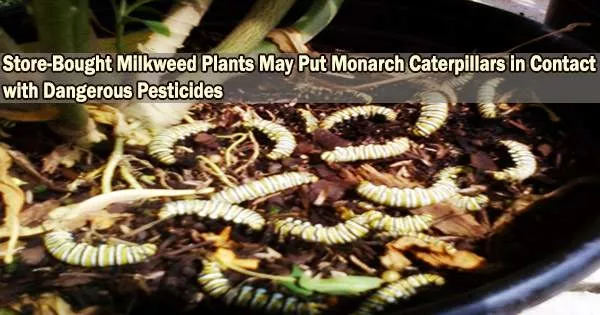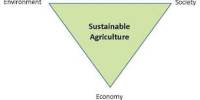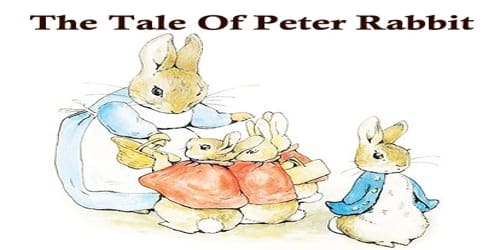According to a study conducted by researchers at the University of Nevada, Reno, milkweed plants bought at retail nurseries across the country were polluted with pesticides detrimental to monarch caterpillars that depend on milkweed. Even plants that were designated as being beneficial to wildlife were polluted.
Pesticides were examined in 235 milkweed leaf samples collected from retail nurseries in 15 different states. The study, done in conjunction with the Xerces Society for Invertebrate Conservation, and released on Monday in the peer-reviewed scientific journal Biological Conservation, revealed a total of 61 distinct pesticides, with an average of 12 per plant and as many as 28 per plant.
People frequently buy and plant milkweed in nurseries in an effort to protect the monarch butterfly, which was just placed on the IUCN Red List of Threatened SpeciesTM as endangered.
Milkweed provides food for Western monarch caterpillars. They have no other food sources and are only suited to the plant, which is harmful to other creatures.
“In a previous study in California that primarily looked at milkweed in agriculture and urban interfaces, we had looked at a small number of plants from retail nurseries, and found that they contained pesticides,” Matt Forister, a biology professor at the University who studies insect ecology and is a coauthor of the paper, said.
“So we were prepared for this much larger sample of nursery plants to again uncover contamination, but it was surprising to see the great diversity of pesticides found in these plants. In many ways, they are as contaminated or even worse than plants growing on the edges of agricultural fields. That was a surprise, at least to me.”
Everyone can take steps to address the risks we uncovered. Consumers can let their nurseries know they want plants that are free from harmful pesticides. Nursery outlets can talk with their suppliers and encourage safer practices, and government agencies can improve oversight.
Aimee Code
While it was unable to determine the full extent of the hazardous burden carried by these plants, 38% of the samples exhibited residue levels that potentially impair the migration and foraging abilities of monarch butterflies, mostly as a result of high fungicide concentrations.
Fungicides have typically been disregarded as a problem for efforts to conserve insects. Smaller wing sizes and possibly other problems could follow from the detrimental impacts on monarch caterpillars. Although the outcomes of numerous pesticides interacting on a butterfly are unclear, they are probably not favorable.
“They are pesticides, they’re designed to kill,” Forister said.
“The farther along in the life stage you go, the higher concentration you need to have a sublethal effect,” Christopher Halsch, the lead author of the study and a doctoral student at the University of Nevada, Reno, said. “For the caterpillars, this means a low concentration can have a more damaging effect than it would have on the butterflies.”
The milkweed plants in the study did not have fewer pesticides in or on their leaves than plants sold in stores and nurseries with wildlife-friendly labels.
“That was the most shocking part,” Halsch said. “The fact that plants labeled as potentially beneficial or at least friendly to wildlife are not better and in some cases might be worse than other plants available for purchase. This research sheds light on how pesticides may impact western monarchs, but many other butterflies are facing even steeper population declines, and pesticides are likely one driver.”
According to Halsch and Forister, reducing contamination during the difficult processes of plant growth and shipping will be a significant challenge to address going forward.
The results of the study show how important it is for nurseries to make sure that any plants they sell as being pollinator-friendly are actually pollinator-safe.
“Everyone can take steps to address the risks we uncovered,” Aimee Code, Pesticide Program Director at the Xerces Society for Invertebrate Conservation, said. “Consumers can let their nurseries know they want plants that are free from harmful pesticides. Nursery outlets can talk with their suppliers and encourage safer practices, and government agencies can improve oversight.”
“And it’s important to keep gardening for pollinators for the long term, just take steps to reduce pesticide exposure: cover new plants the first year, water heavily, discard the soil before planting, as it may be contaminated, and avoid pesticide use.”
The western monarch butterfly is widely celebrated, especially around the California coast where enormous numbers of them spend the winter in tree groves.
Western monarch populations have decreased significantly over the past three decades, from millions in the 1980s to as few as 1,800 individuals. Fortunately, this winter saw a rise in population. If that encouraging trend keeps up, eventually the population may return to its formerly healthy levels.
















